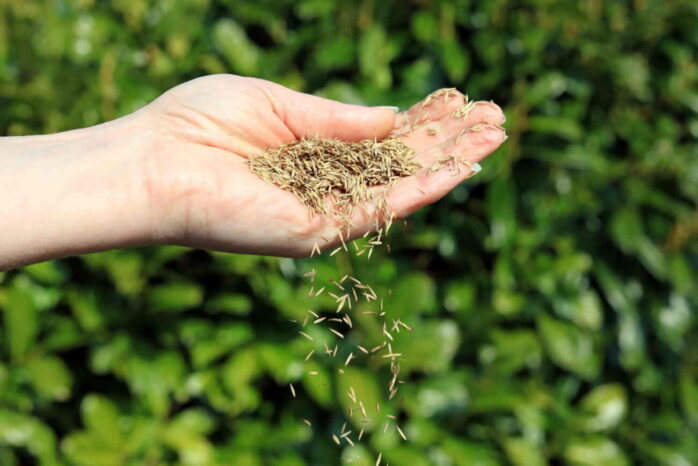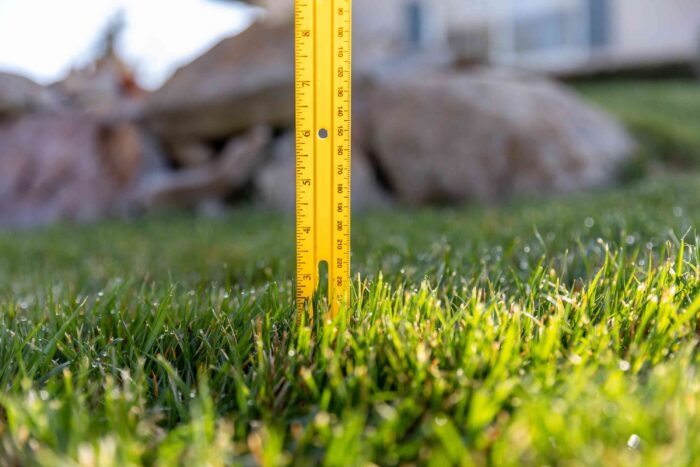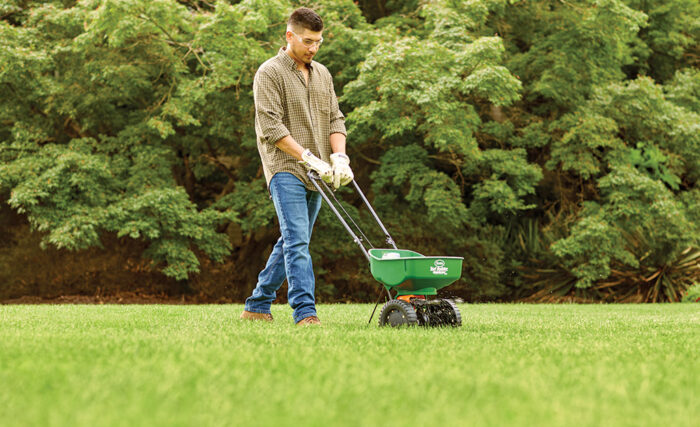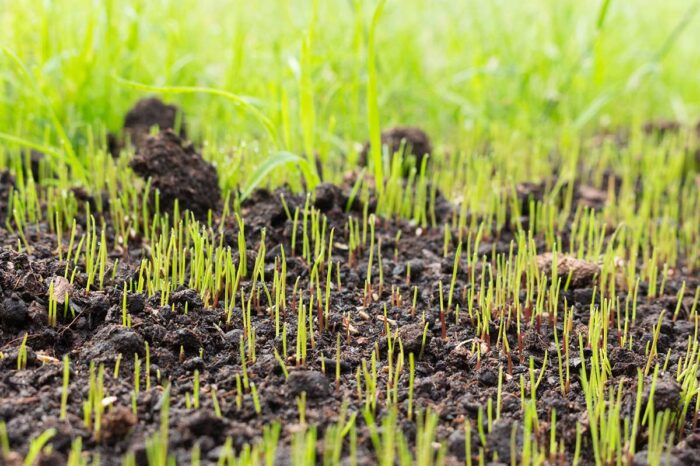
Transitional seasons present a golden opportunity for homeowners to plant grass seeds in mild climates and transform their lawns into lush, green havens. Planting grass seed during these periods can be incredibly rewarding if done right. Whether dealing with cool or warm-season grasses, these valuable tips will help you achieve a healthy, vibrant, green lawn.
Understanding grass types
Before delving into how to plant grass seed, it’s essential to understand what type of grass thrives in your region. Mild climates are often suitable for both cool and warm-season grass seeds, offering homeowners a variety of choices.
Cool-season grasses, such as Kentucky bluegrass or perennial ryegrass, are well-suited to regions with mild transitional seasons. These grasses stay green throughout the fall and winter, providing a lush appearance even when the weather cools down.
On the other hand, warm-season grasses, like Bermuda grass and Zoysia grass, thrive in the warmer months of spring and summer, turning brown during the winter but rebounding vigorously when the temperatures rise again. Choosing the right grass type is the first step toward a thriving local garden.

Soil preparation
Planting grass seed depends heavily on soil quality. To kickstart your lawn’s transformation, make sure
to follow these soil preparation steps:
Loosen the soil
Use a garden rake to loosen the soil to promote healthy grass growth. This creates an ideal environment for roots to establish themselves. Additionally, loosening the soil enhances water and nutrient penetration, ensuring your new grass seedlings get the necessary nourishment.
Aeration is a valuable practice to consider during soil preparation. Aerating your lawn involves perforating the soil with holes, allowing air, water, and nutrients to penetrate deeply.
Soil test
Conduct a soil test to determine its pH and nutrient levels. Adjust the soil accordingly with amendments to ensure it’s the perfect foundation for your grass seed. Knowing your soil’s characteristics allows you to tailor your fertilization and pH adjustments for optimal grass growth.
Organic matter, such as compost or well-rotted manure, can enhance soil structure and fertility. Incorporating organic matter into the soil provides essential nutrients and improves water retention, creating an even more hospitable environment for your grass seed.
Seed-to-soil contact
For successful germination, ensure that the grass seed directly contacts the soil. This step can be achieved by lightly raking the soil surface after seeding. Mulching is another method to ensure proper seed-to-soil contact.
Applying a thin layer of mulch over the newly seeded lawn area can help retain moisture, regulate soil temperature, and prevent weed growth, all contributing to successful germination and grass establishment.

Planting cool-season grasses
For those opting for cool-season grasses, such as Kentucky bluegrass or perennial ryegrass, the transitional seasons offer an excellent opportunity for planting.
The best time to plant cool-season grasses
The best time to plant cool-season grasses is in the early fall. The soil is still warm during this period, promoting rapid seed germination. This timely planting helps the grass establish itself before winter’s chill. Overseeding an existing lawn with cool-season grass seeds in the fall can help rejuvenate a tired lawn and fill in thin or bare areas. It’s a cost-effective way to improve your lawn’s overall health and appearance.
Keep the soil moist
Water the seed regularly to keep the soil consistently moist but not soggy. This encourages strong root development. Consistent moisture is essential for cool-season grasses, ensuring the roots develop deeply and the grass can withstand the colder months.
Starter fertilizer
Applying a starter fertilizer with high phosphorus content can boost new grass growth, giving your lawn a head start. A phosphorus-rich fertilizer provides lawn grasses with the necessary nutrients for root development, helping grass seedlings establish themselves quickly.

Time to plant grass during warm season
The best grass for the warm season, like Bermuda grass, thrives in mild climates. Here are some essential tips for planting these turf grass varieties:
Early summer planting
Warm-season grass seed should be planted in early summer when the soil is warm. This ensures quick germination and establishment. The warm soil temperatures promote rapid root growth and overall grass development.
Watering routine
Water your warm-season grasses deeply but less frequently. This encourages deep root growth and a more drought-resistant lawn. Deep watering promotes deep root growth, allowing your grass to access moisture from deeper soil layers during dry spells.
Cover grass seed
Cover the seeds with a thin layer of straw or mulch to protect them from washing away. This protective layer helps retain moisture, prevent erosion, and provide a stable microclimate for seed germination.
Grass clippings from regular mowing can be a natural mulch when finely chopped. Leaving them on the lawn after mowing can help conserve moisture, return nutrients to the soil, and reduce the need for additional mulching.

Maintenance tips
Regular mowing
Once your grass reaches a suitable height, begin regular mowing. Keep the grass blade at the recommended height for your chosen grass type. Proper mowing promotes thicker grass growth and discourages weed infestations.
Weed control
Look for weed seeds and promptly remove invaders to ensure your grass seedlings thrive. Weeds can compete with your grass for resources, so regular weeding is essential for a healthy lawn.
Natural weed control methods, such as hand-pulling or using organic herbicides, can help maintain a chemical-free lawn while effectively managing weed growth. Additionally, consider lawn edging to create defined borders between your lawn and garden beds, reducing the chance of weeds encroaching on your grass.
Dealing with bare spots
If you notice bare spots, consider overseeding with the same grass seed to fill in the gaps. Properly overseeing bare areas helps maintain a uniform and lush lawn appearance. Choosing the right grass seed mix for overseeding is essential. Look for a mix matching your existing grass type to ensure a seamless transition between new and established turf.

Last words
With the right approach to grass seed planting, your mild-climate lawn can become a lush, green paradise. Remember to choose the right grass type for your region, meticulously prepare the soil, and provide the necessary care for your new lawn. By following these tips, you’ll be well on your way to a thriving lawn that enhances your outdoor space’s beauty and functionality.





